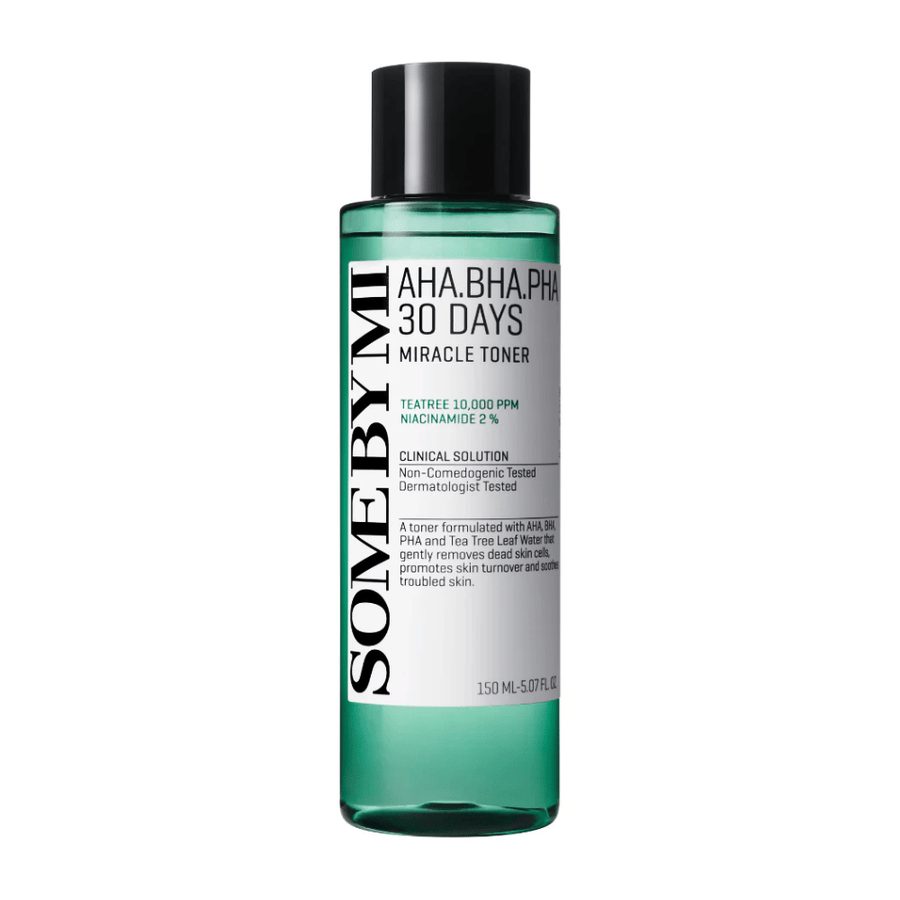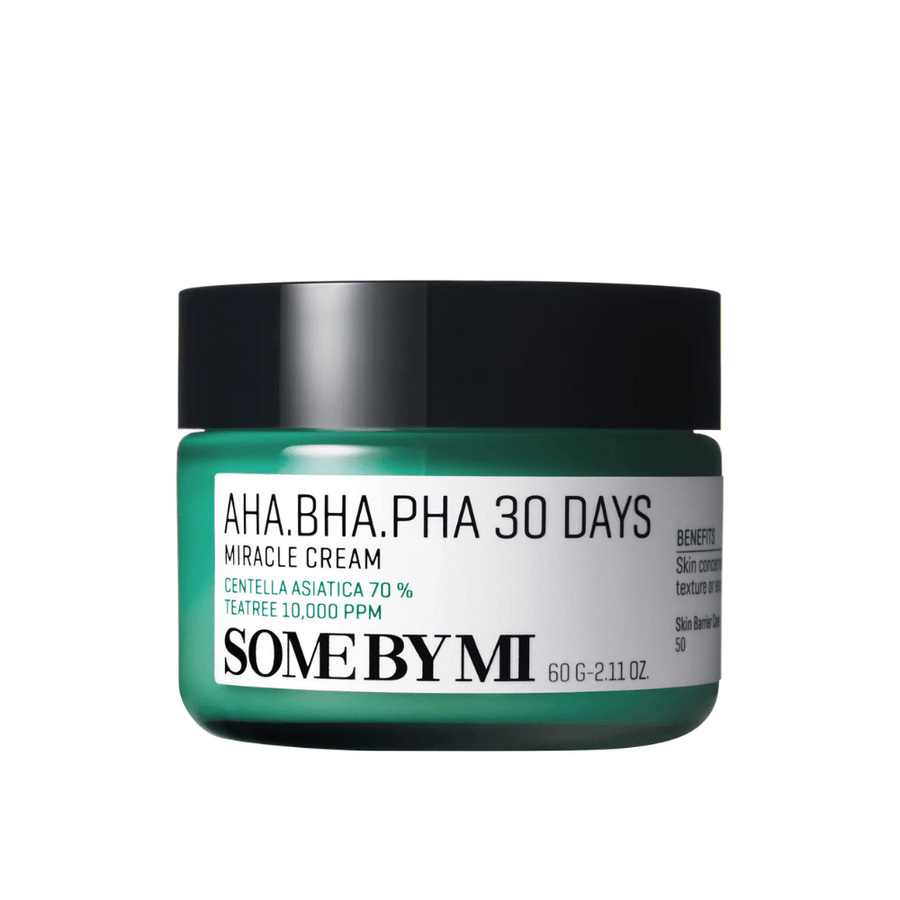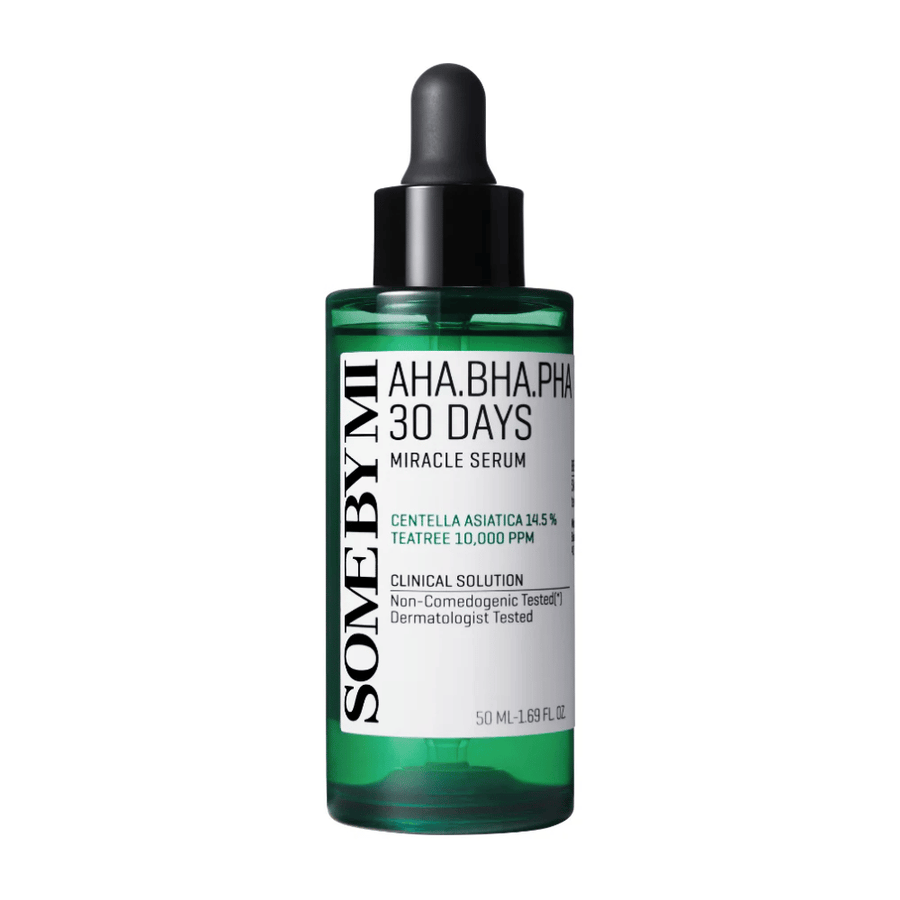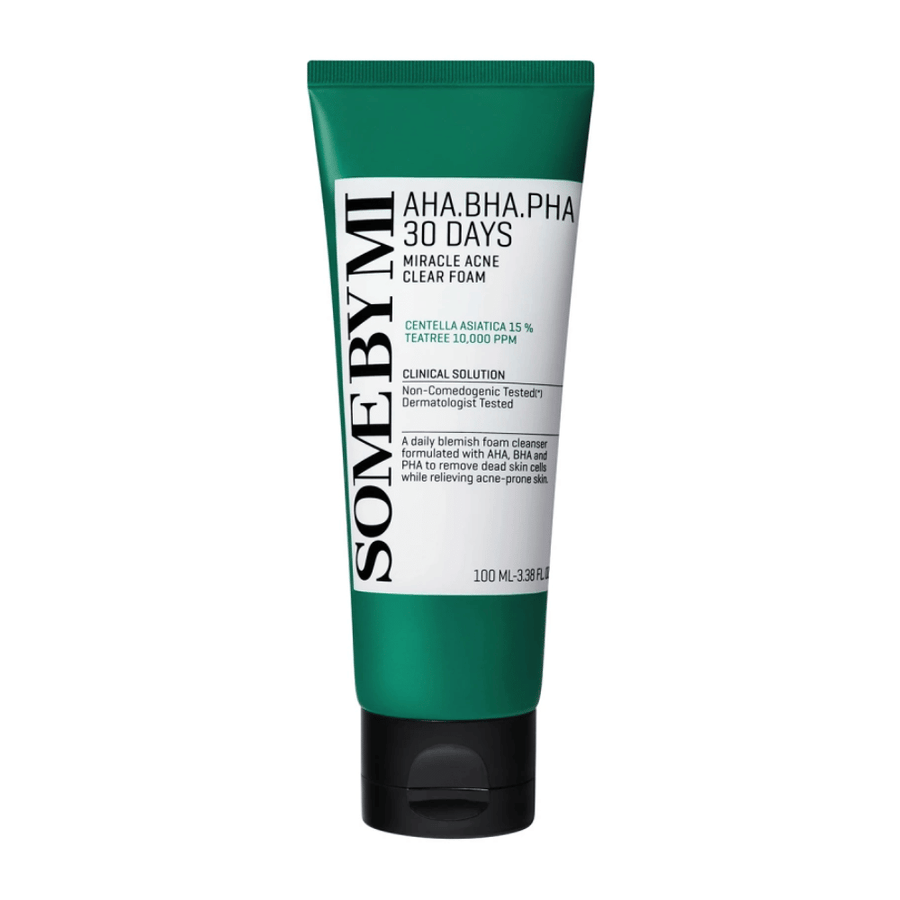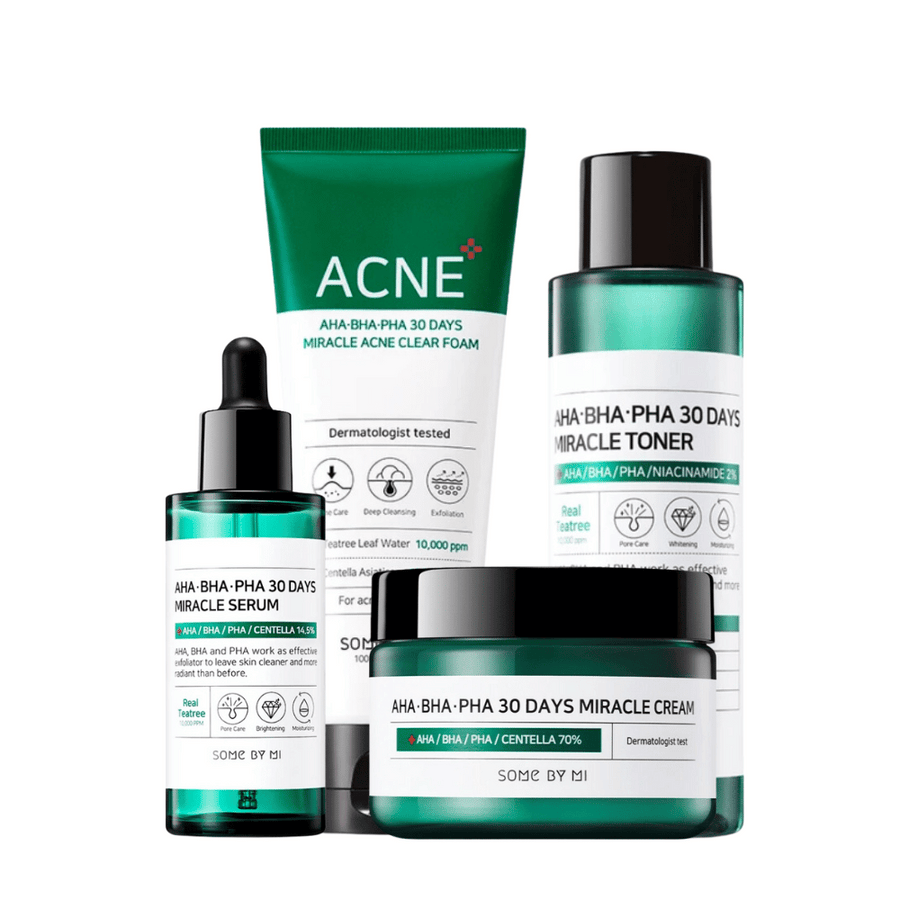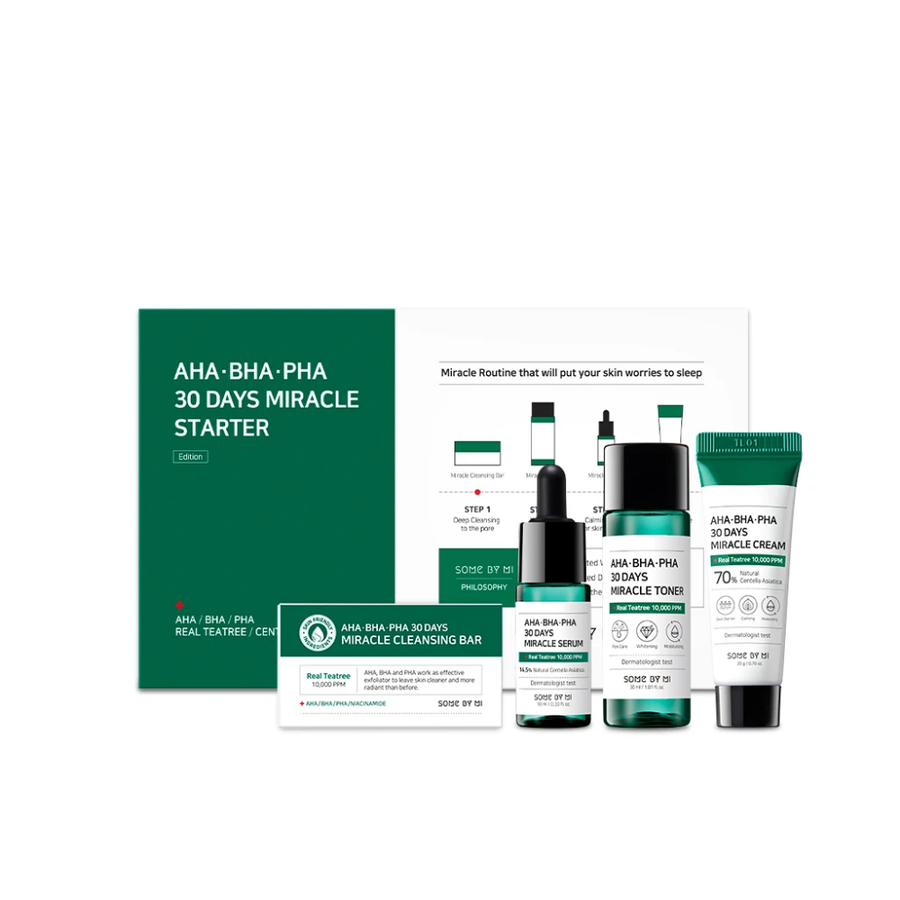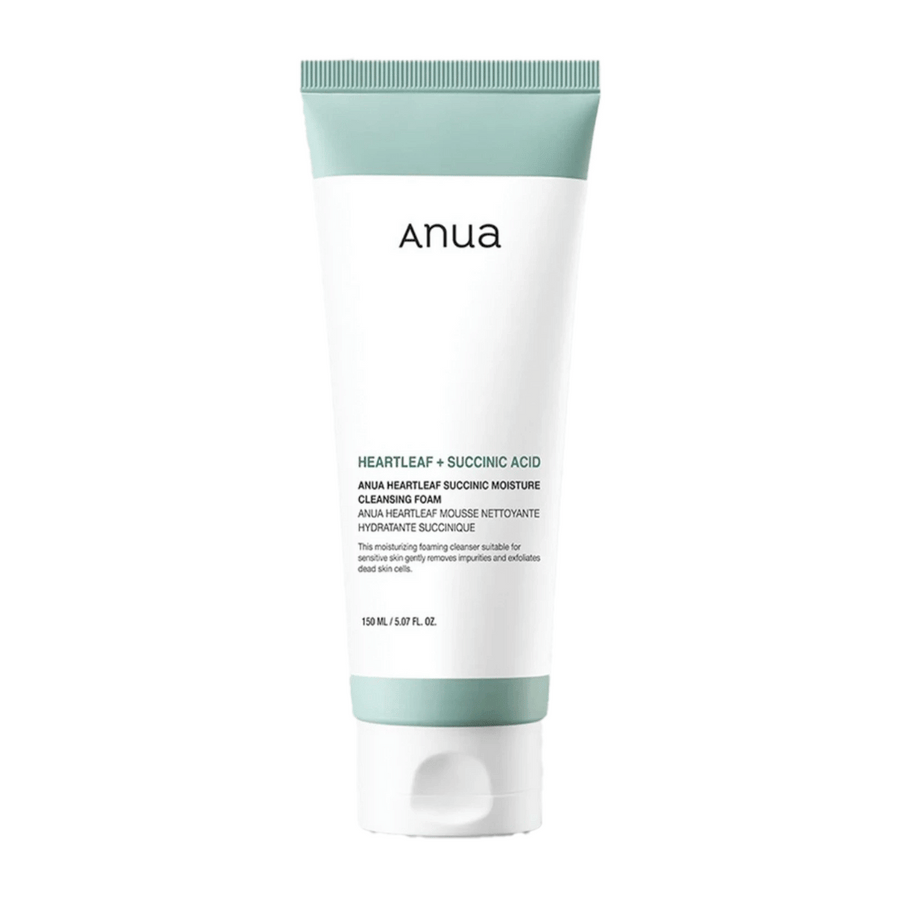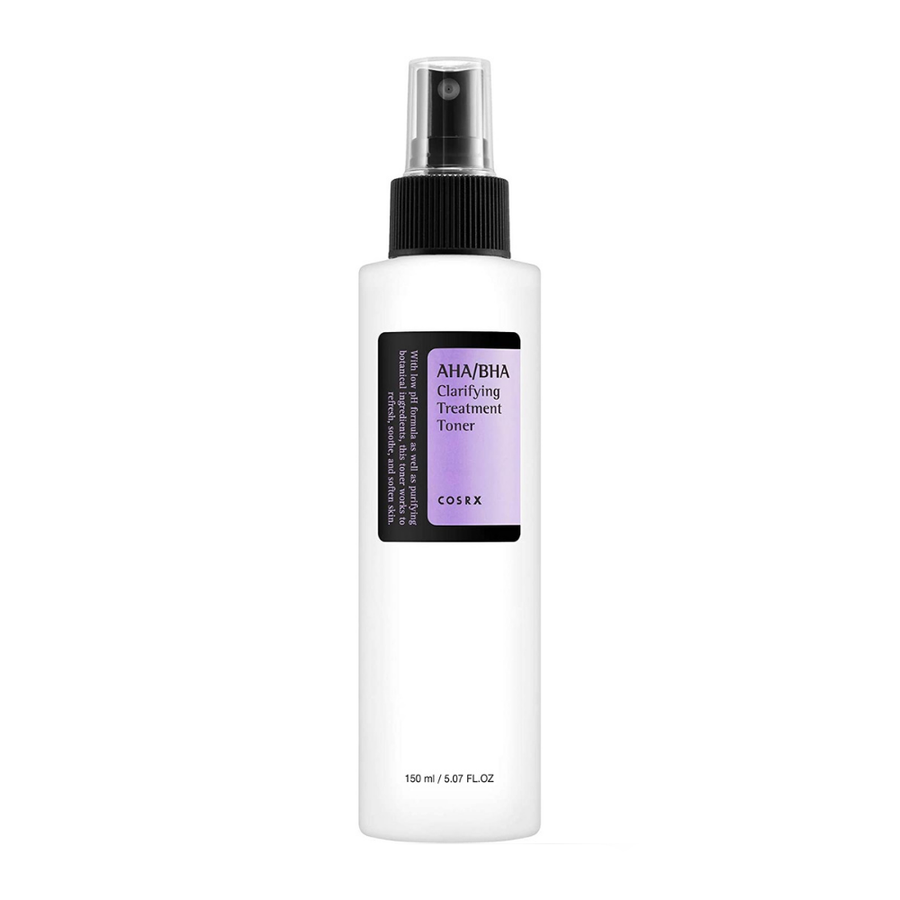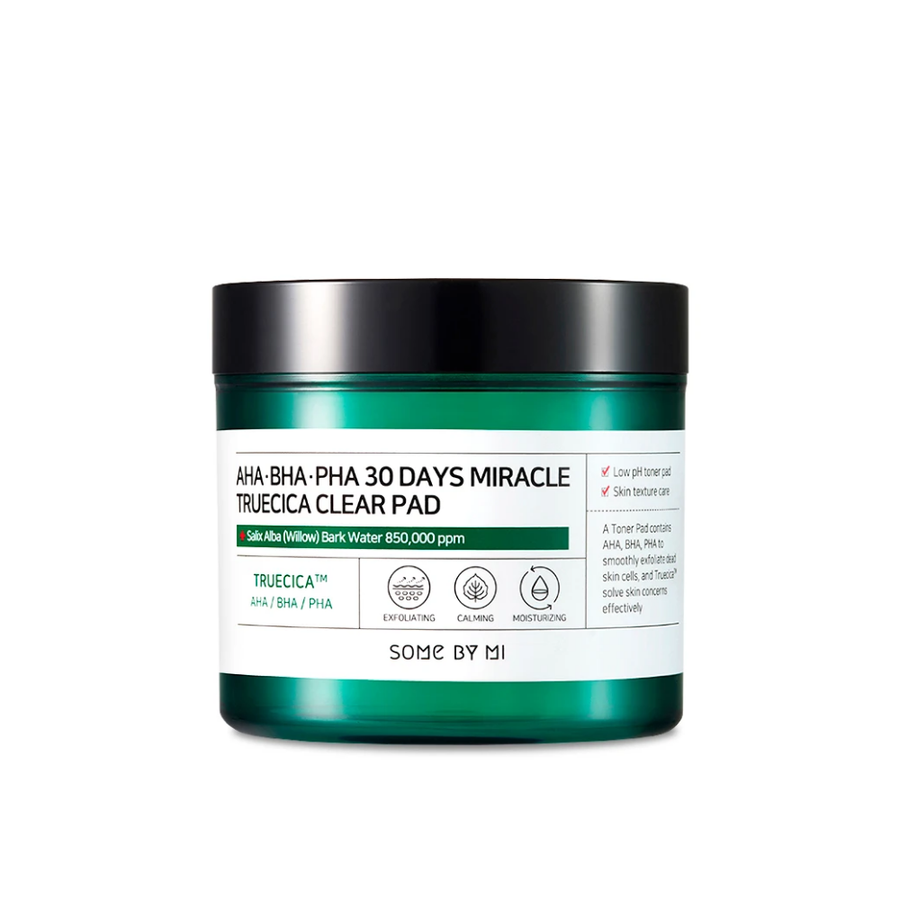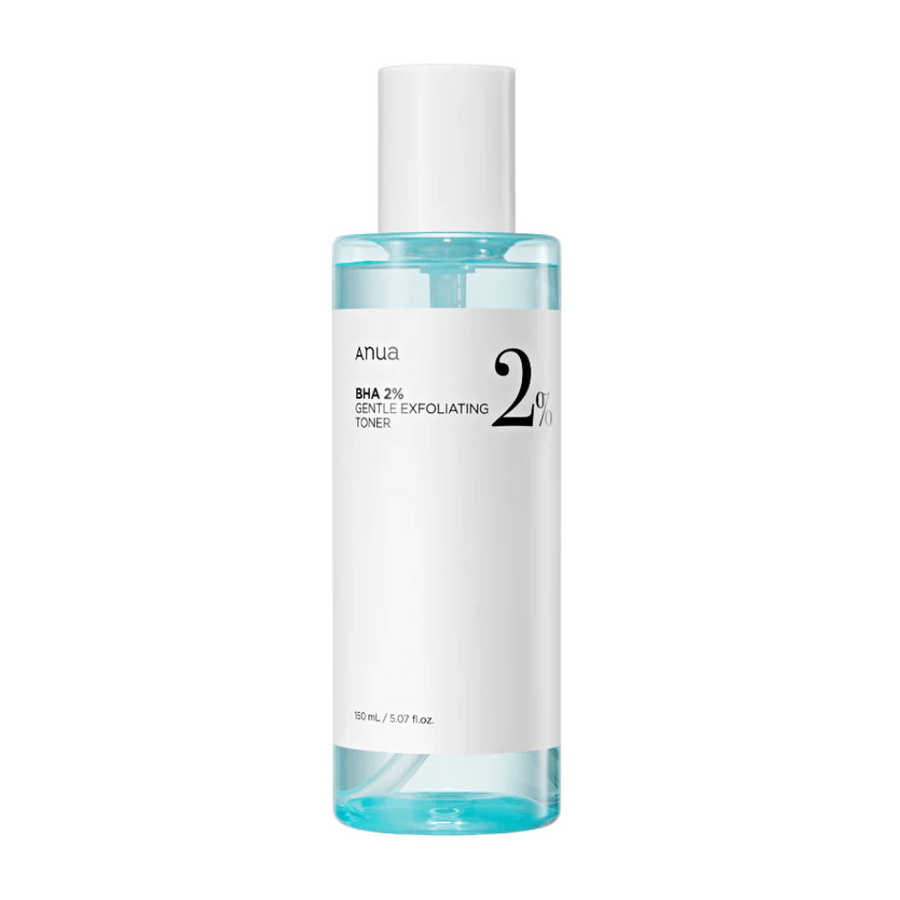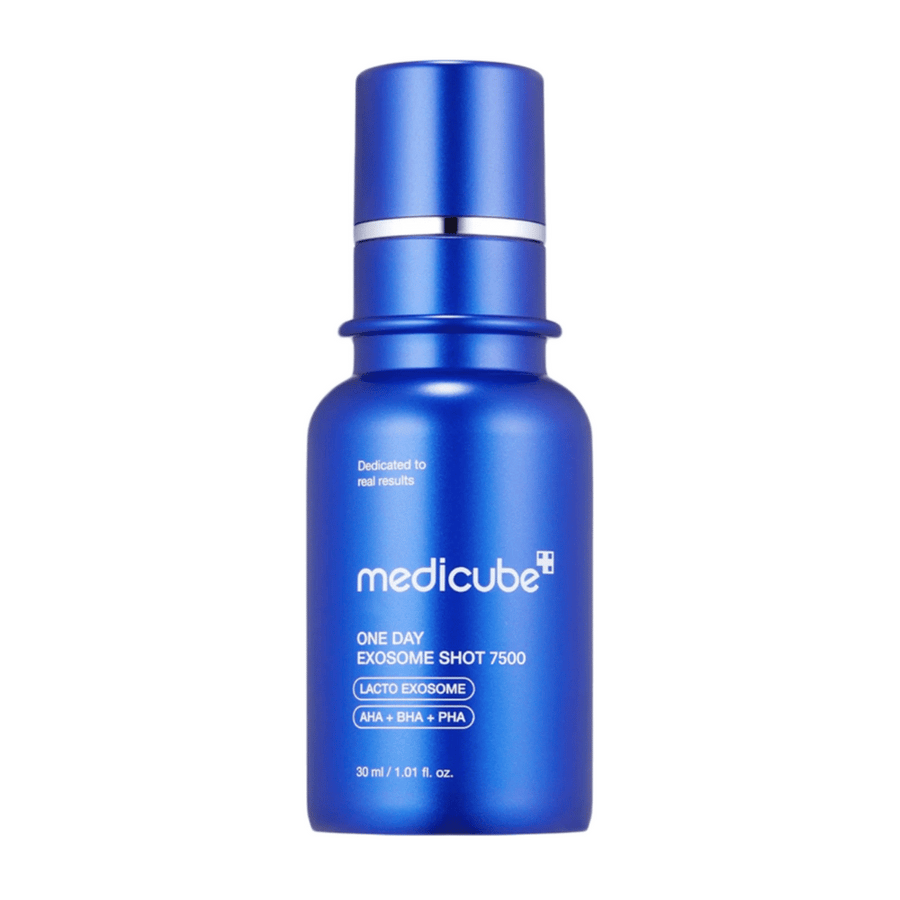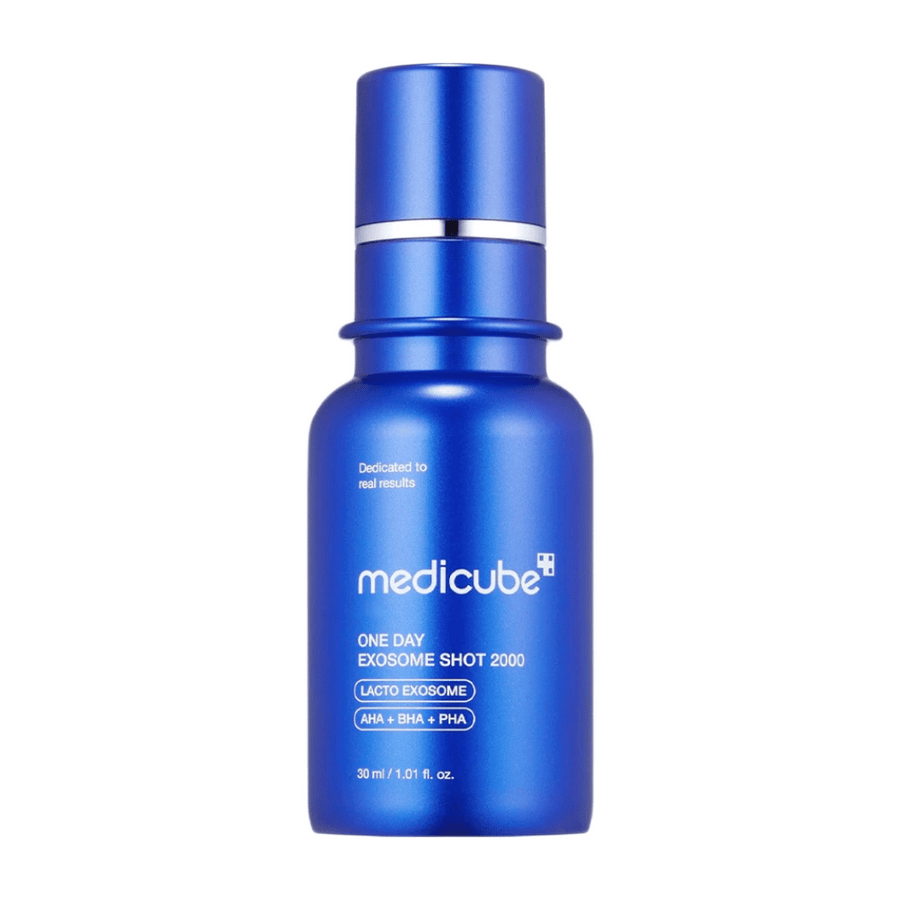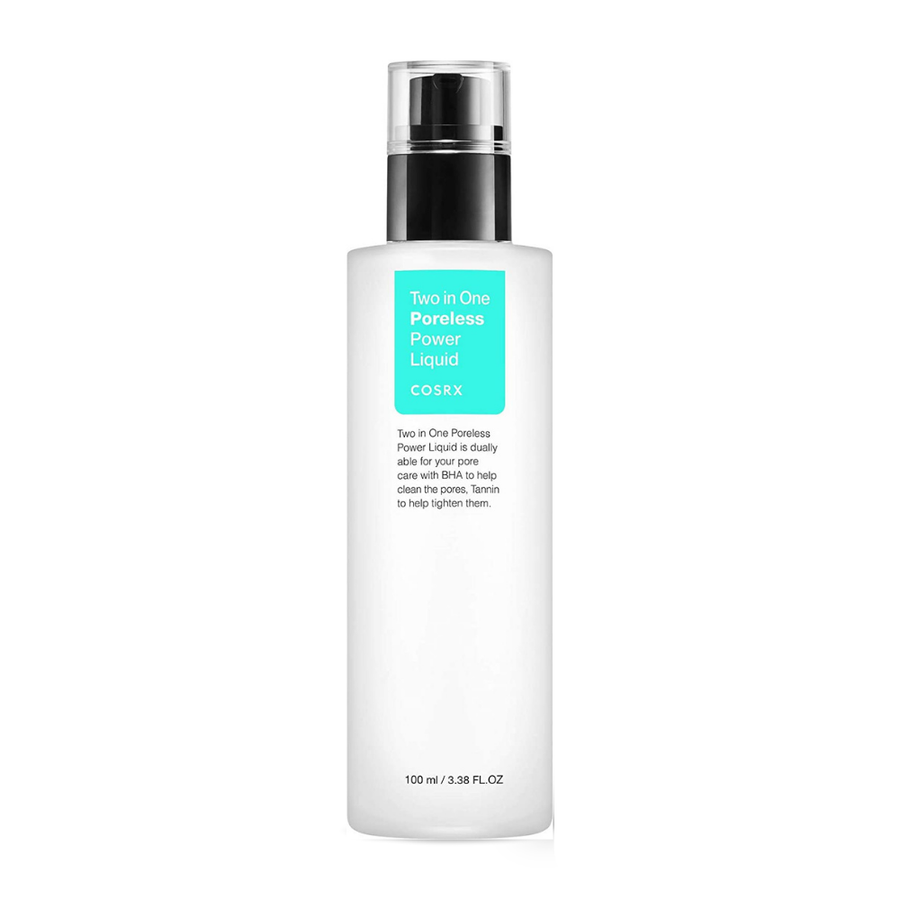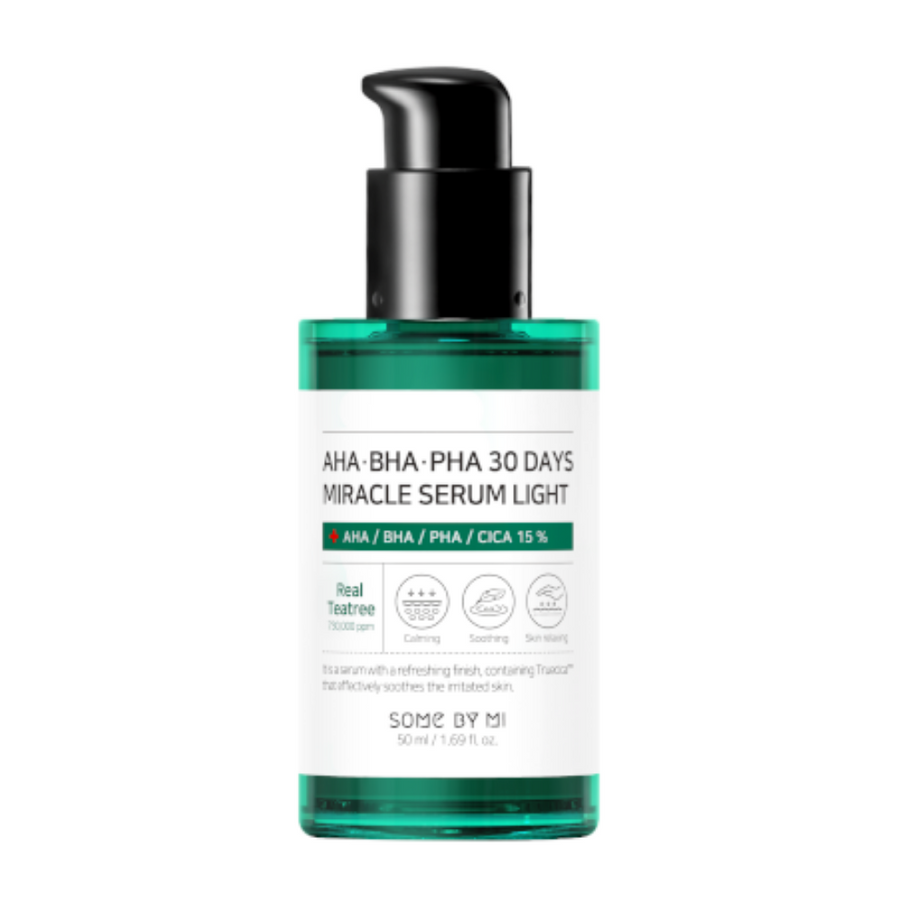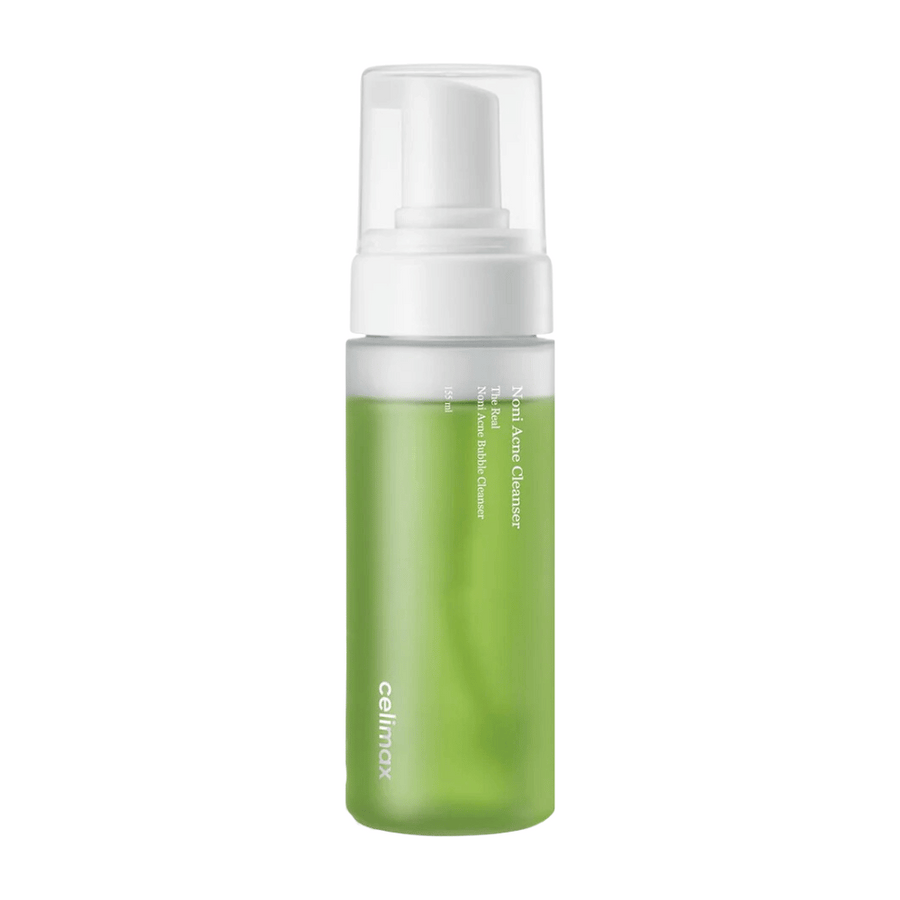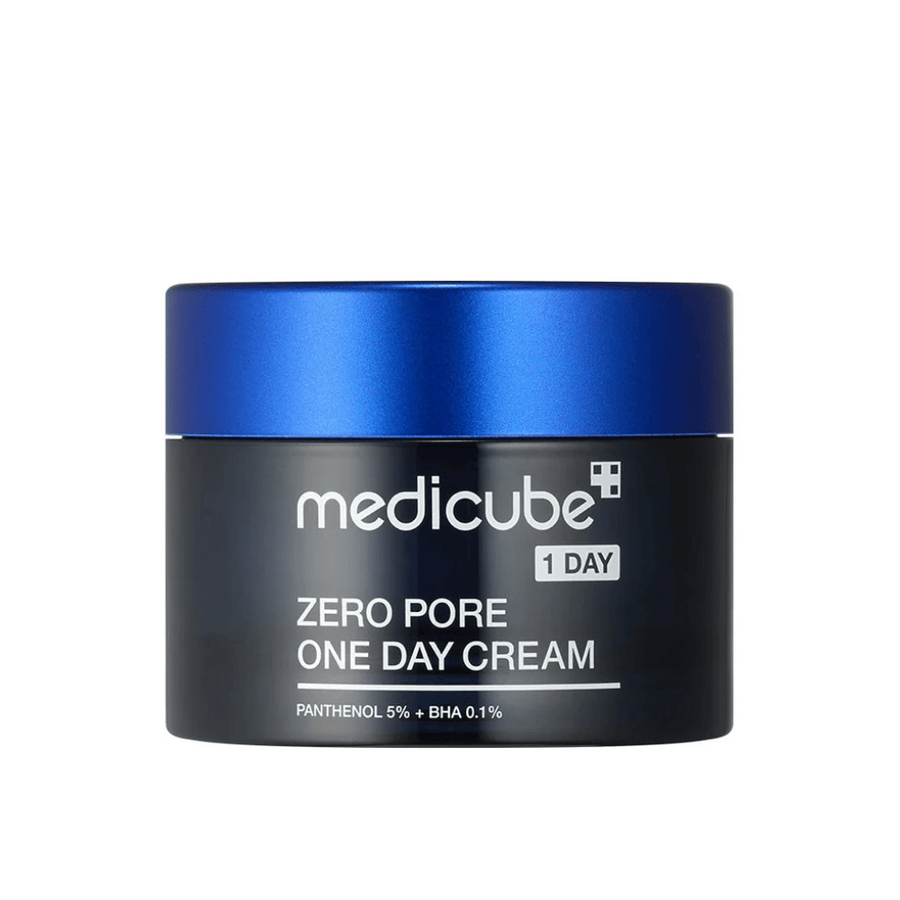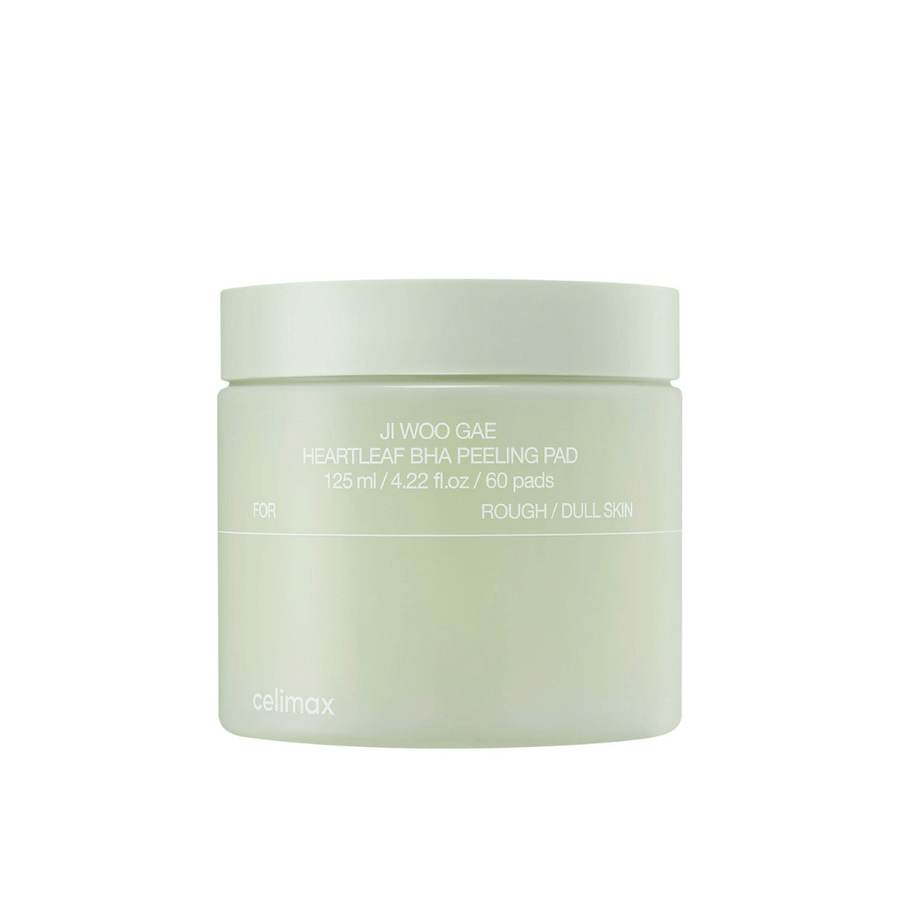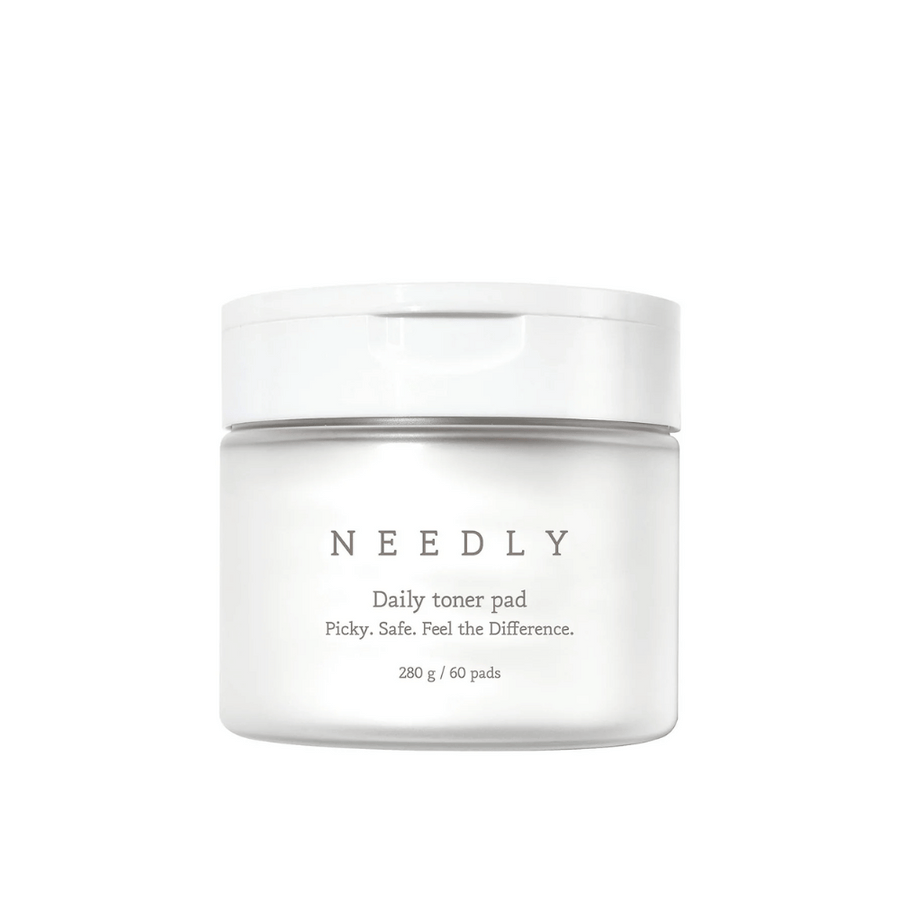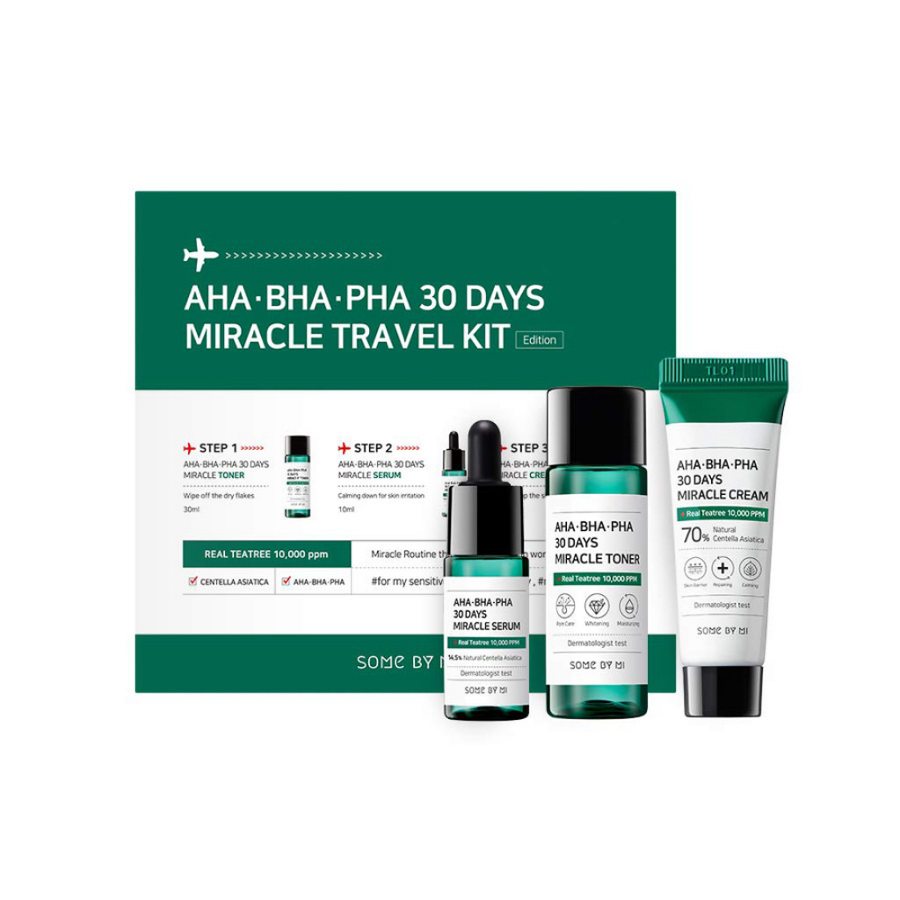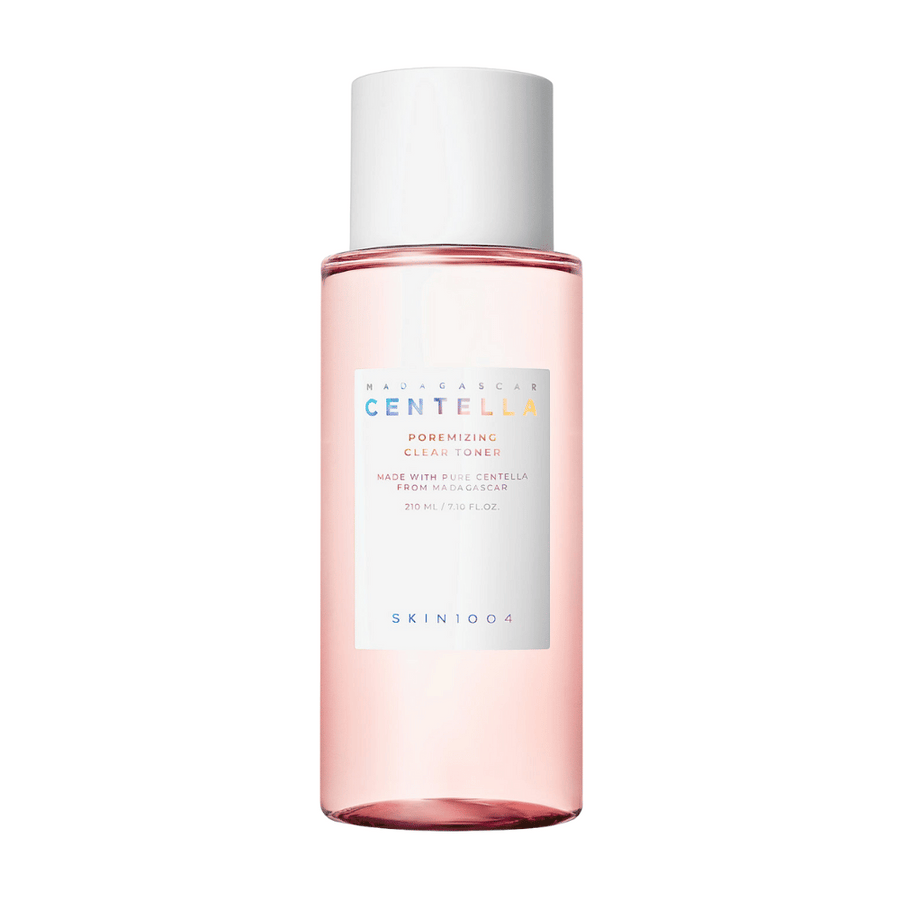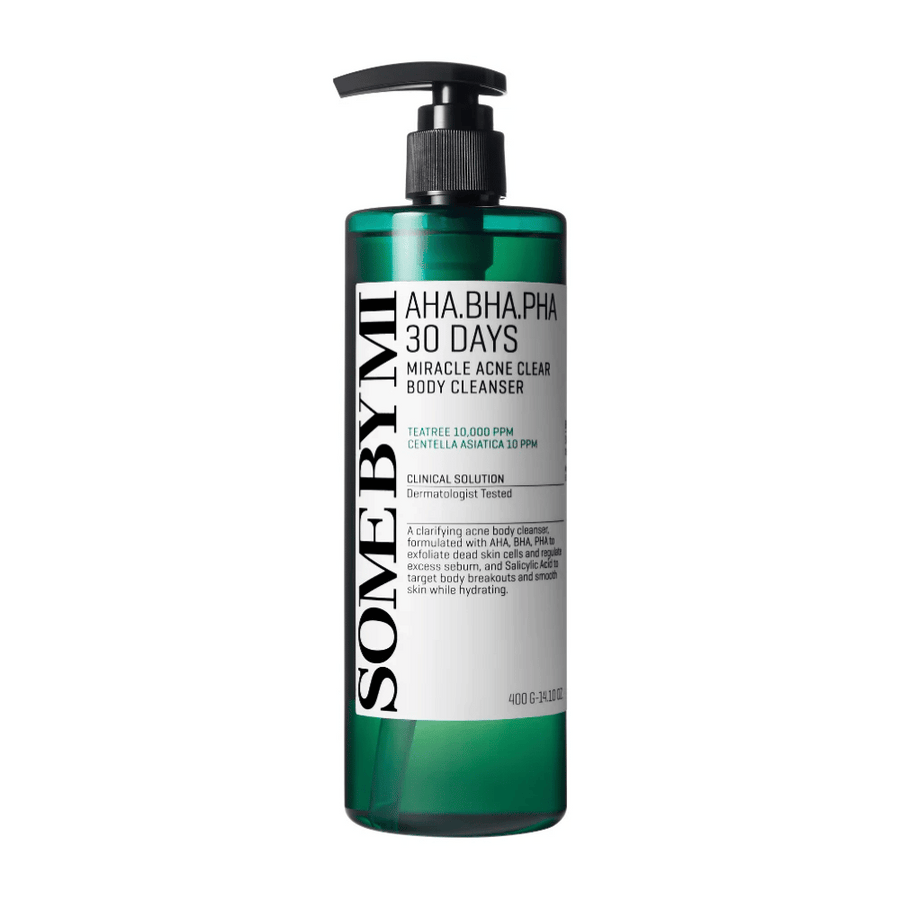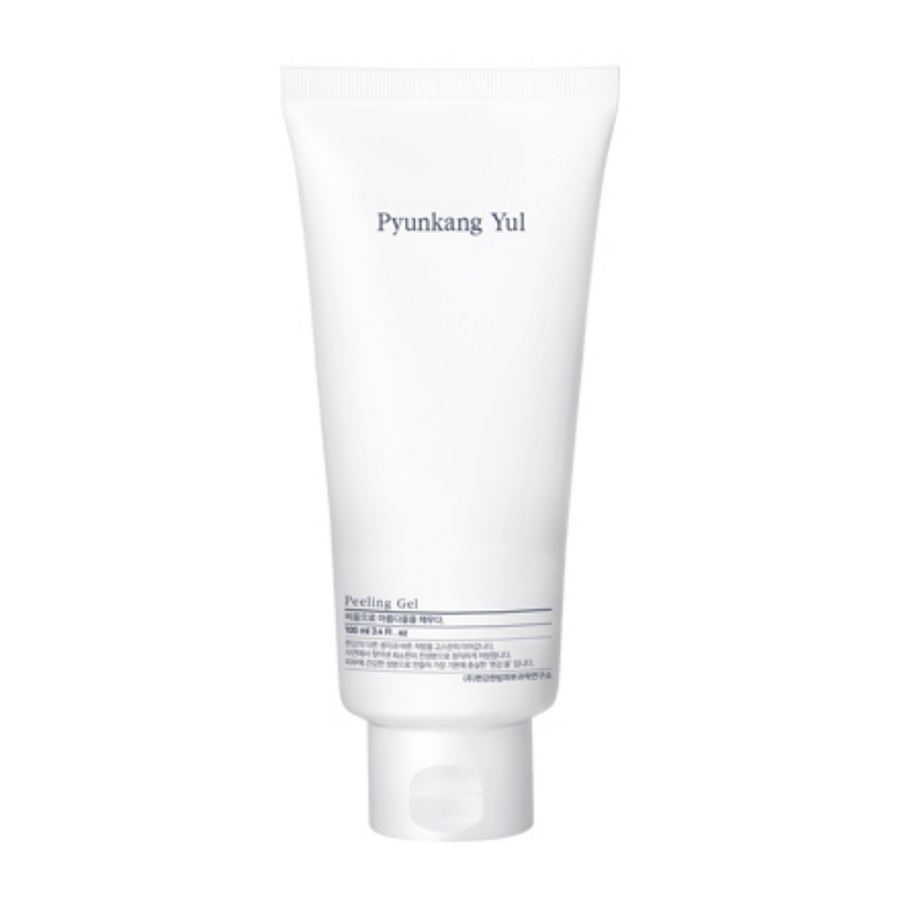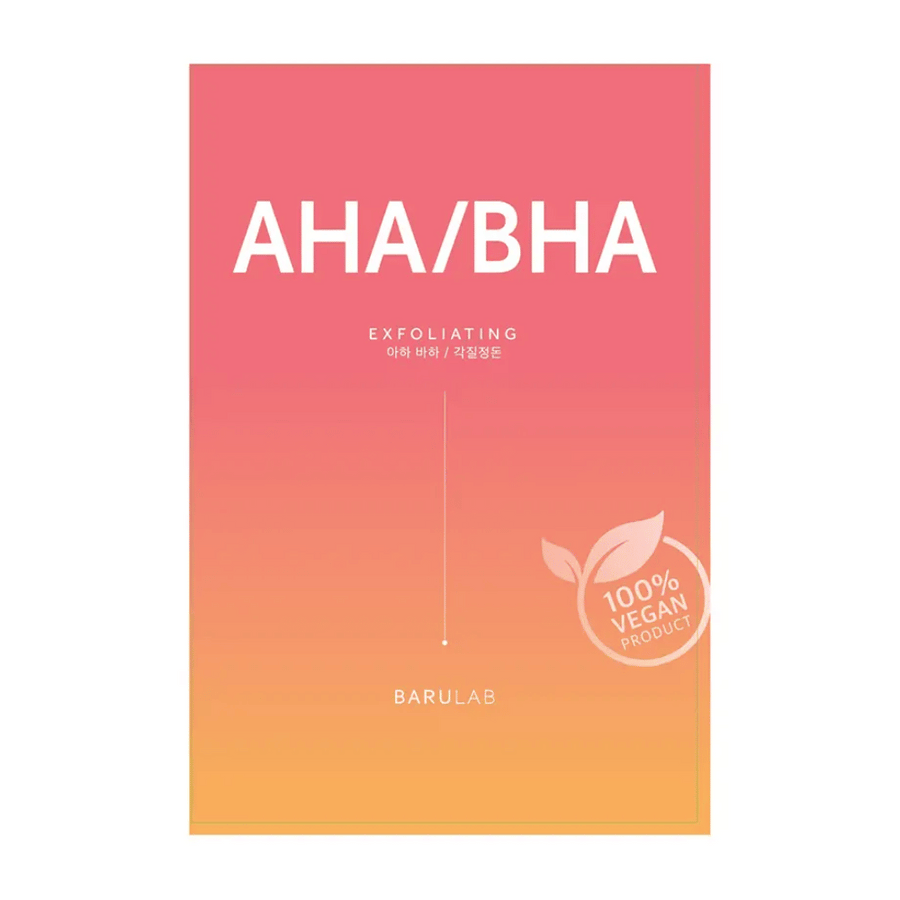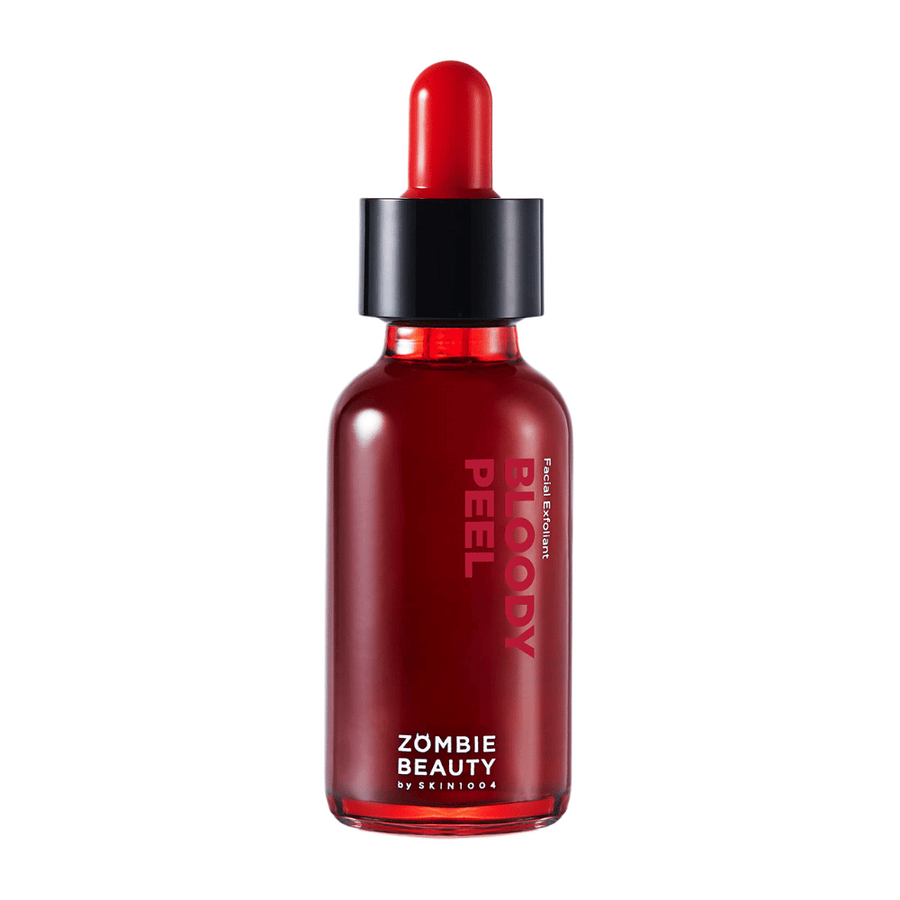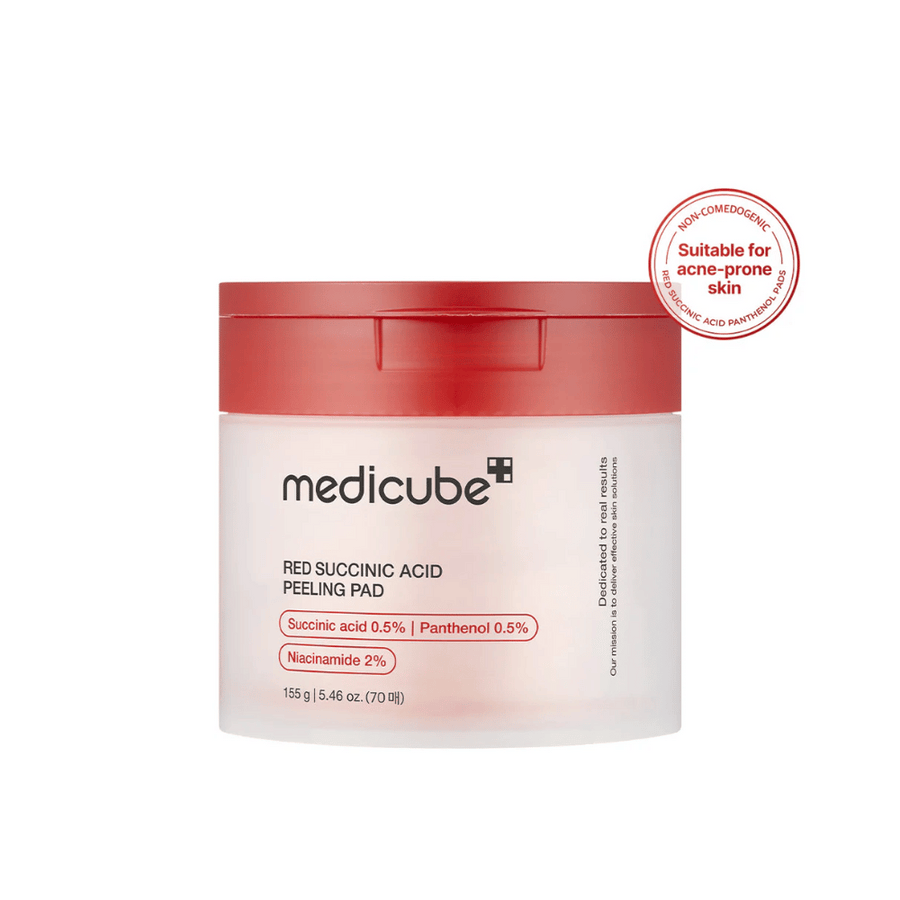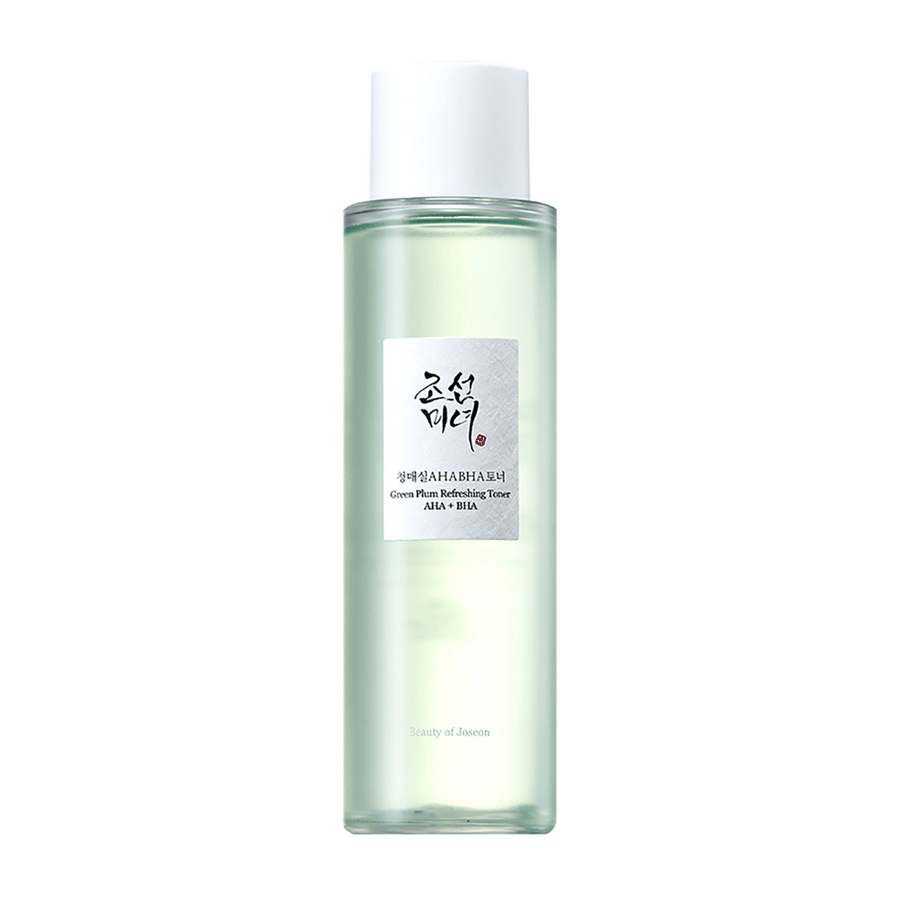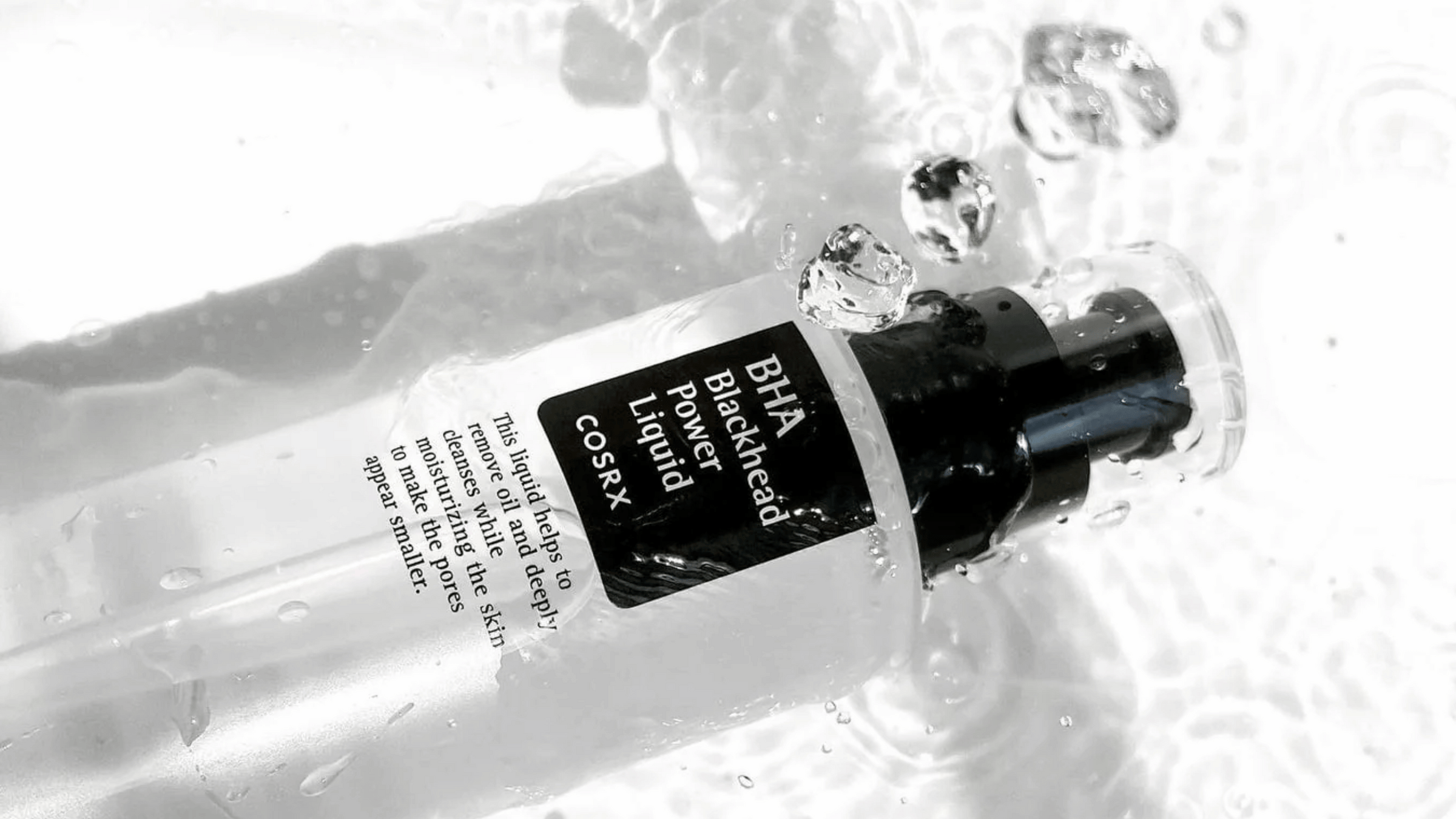
BHA acid is a popular ingredient in skincare used to treat acne and clogged pores. The most well-known form is salicylic acid, which can penetrate deep into the skin. Read on to learn more about BHA acid, its benefits, and how to best use it.
Key Takeaways
- BHA acid, especially salicylic acid, is effective for treating oily and acne-prone skin by penetrating deeply into the pores and dissolving sebum.
- BHA acid offers anti-inflammatory properties that can soothe irritation and reduce redness, making it suitable even for sensitive skin.
- To maximize the benefits of BHA acid in your skincare routine, it is recommended to start with a low concentration and gradually increase usage, and always use sunscreen after application.
What is BHA Acid?
BHA acid, or beta hydroxy acid, is a type of acid widely used in skincare. The most well-known BHA acid is salicylic acid, which is naturally derived from willow bark or can be produced synthetically. Salicylic acid has been used in medicine and skincare for centuries, thanks to its anti-inflammatory properties that help soothe the skin.
When looking for products containing BHA acid, it is important to look out for ingredients like salicylic acid, salicylate, and willow extract. These ingredients indicate that the product contains BHA and can provide the benefits we will discuss in the next section.
BHA acids are fat-soluble, which means they can penetrate deep into the pores and effectively treat issues like clogged pores and acne. This sets them apart from other acids like AHA (alpha hydroxy acid) and PHA (poly hydroxy acid), which are water-soluble and work more on the skin's surface.
Benefits of BHA Acid for the Skin
BHA acid is known for its many benefits for the skin. Here are some of the key benefits:
- It is a powerful exfoliating acid that helps remove dead skin cells.
- It cleanses the pores deeply, which is particularly beneficial for people with oily or acne-prone skin.
- BHA acid dissolves sebum and prevents clogged pores.
By using BHA acid, you can improve the texture and appearance of the skin. AHA acid, on the other hand, increases skin cell renewal and reduces wrinkles, scars, and pigmentation.
Another significant benefit of BHA acid is its anti-inflammatory properties. Salicylic acid, which is the most common BHA acid, can soothe irritations and reduce redness in the skin. This makes it an ideal ingredient for people with sensitive skin or those suffering from skin problems like rosacea.
BHA acid can also improve skin texture by increasing cell renewal. By stimulating the production of new skin cells, BHA acid can contribute to a smoother and more radiant skin. This is particularly useful for combating signs of aging like fine lines and wrinkles.
Finally, BHA acid helps create balanced skin. By effectively cleansing and exfoliating the skin, BHA acid can help prevent breakouts and keep the skin clear and healthy. Whether you have oily, acne-prone, or mature skin, BHA acid can be a game-changer in your skincare routine.
How BHA Acid is Used in Korean Skincare Routines
In the Korean skincare routine, BHA acid plays an important role. A typical Korean skincare routine starts with double cleansing, which means first using a oil-based cleansing and then a water-based cleansing to remove all impurities from the skin. This step is crucial to prepare the skin for the application of BHA acid, ensuring it can penetrate deeply and work effectively.
After cleansing, a toner with BHA acid is often applied. Toners containing BHA can help restore the skin's pH balance and prepare it for further treatments. A popular product in this category is Treatment 2% BHA Toner, known for being less drying and containing moisturizing ingredients. In Korean skincare routines, both AHA and BHA are used for their different benefits, where AHA acids are known to exfoliate the surface of the skin while BHA acids penetrate deeper into the pores.
BHA acid is found in several different types of products, including:
- facial washes
- creams
- toners
- spot treatments
These products are often used in the evening after cleansing and before moisturizing. By integrating BHA acid into your evening routine, you can benefit from its powerful properties without risking overexposure to the sun.
Using BHA acid regularly can significantly improve the skin's texture and appearance. Korean skincare experts recommend starting with products with lower concentrations and gradually increasing usage to avoid irritation. By carefully following these steps, you can achieve clearer and more radiant skin.
Skin types that can benefit from BHA acid
BHA acid is particularly effective for certain skin types. Oily and acne-prone skin can greatly benefit from BHA acid because it is oil-soluble and can penetrate deeply into the pores to dissolve sebum and prevent acne. For people with these skin types, BHA acid can be a lifesaver.
But BHA acid is not just for people with oily skin. Mature skin can also benefit from BHA acid, as it can help increase cell renewal and thereby improve skin texture and reduce the appearance of fine lines and wrinkles. By integrating BHA acid into your skincare routine, you can achieve more youthful and radiant skin.
Sensitive skin can also benefit from BHA acid, although it is important to be cautious and choose products that are specifically designed for sensitive skin. BHA acids tend to cause less irritation compared to other acids like glycolic acid, making them a more suitable choice for people with sensitive skin. Regardless of your skin type, BHA acid can offer a range of benefits that improve your skin's health and appearance.
AHA acid is also beneficial for various skin types, especially dry, normal, and mature skin, by increasing skin cell renewal and reducing wrinkles, scars, and pigmentation.
Steps in the skincare routine where BHA acid is used
Integrating BHA acid into your skincare routine might seem complicated, but it doesn't have to be. Step one is always to start with a thorough cleansing of the skin. This is crucial for the BHA acid to penetrate deeply into the pores and work effectively. After cleansing, it's time to apply your BHA product. The use of both AHA and BHA in skincare routines can provide various benefits, such as improved skin texture and reduced pores.
BHA acid can be used both morning and evening, but it is important to always use sunscreen during the day after applying BHA acid. This is because the skin can become more sensitive to the sun after exfoliation. After applying BHA acid it is recommended to use a moisturizer to ensure that the skin remains hydrated and to prevent dryness.
For beginners, it is good to start by using BHA acid once or twice a week to assess the skin's tolerance. If the skin responds well, the frequency can be gradually increased. By following these steps and adjusting the usage based on your skin's needs, you can effectively integrate BHA acid into your skincare routine and achieve radiant results.
Common questions about BHA acid
When it comes to BHA acid, there are many questions that often arise. Here we answer some of the most common questions to help you understand and use BHA acid in the best way.
The difference between BHA and other acids
A common question is how BHA differs from other acids such as AHA, AHA BHA, and PHA. BHA acid is fat-soluble and can penetrate deeper into the skin, while AHA, like glycolic acid, is water-soluble and more hydrating. This makes BHA ideal for treating oily and acne-prone skin.
AHA acids, especially glycolic acid, are more likely to cause irritation compared to BHA acids. PHA acid, on the other hand, is milder with a larger molecular size, resulting in weaker exfoliation but with the ability to bind moisture and provide antioxidants to the skin. This makes PHA acids gentle on the skin and good for sensitive skin, which makes aha bha and pha important to know.
The natural anti-inflammatory properties of BHA acid and larger molecular size make it less irritating than many other acids. Despite this, it is always best to consult a skin therapist before combining different acids in your skincare routine to ensure they are used correctly.
Can BHA acid be used daily?
Another common question is whether BHA acid can be used daily. The answer is that it depends on your skin type and the concentration of the product. For some, daily use of BHA acid can provide fantastic results, while others may need to adjust the frequency based on the skin's reaction.
It is important to start slowly and gradually increase the usage to avoid irritation or discomfort. Adjust the use of BHA acid based on your individual needs and how your skin responds to the treatment.
Products with BHA acid for sensitive skin
For people with sensitive skin, there are specific products with BHA acid that are specially formulated to be gentle and effective. These products often contain salicylic acid, which helps reduce inflammation and clean clogged pores.
Examples of such products include mild toners and cleansing products that are designed to be gentle on the skin while offering the benefits that BHA acid can provide. By choosing the right products, even people with sensitive skin can benefit from the amazing properties of BHA acid.
Summary
In summary, BHA acid is a powerful ingredient that can offer a range of benefits for your skin. By exfoliating and deeply cleaning the pores, BHA acid can help treat oily and acne-prone skin, as well as improve the skin's texture and appearance. Its anti-inflammatory properties also make it an excellent choice for people with sensitive skin.
Integrating BHA acid into your skincare routine may seem overwhelming at first, but by following the recommended steps and adjusting usage according to your skin type, you can achieve fantastic results. Whether you use BHA acid in the form of a toner, facial water, or spot treatment, the key is to be consistent and patient.
Finally, regardless of your skin type or skincare needs, BHA acid can be a valuable addition to your skincare routine. By understanding how BHA acid works and how it can be used effectively, you can take your skincare results to the next level and enjoy a clearer, smoother, and more radiant complexion. Give your skin the care it deserves and experience the benefits of BHA acid!
Common Questions and Answers
What is BHA acid and how does it work?
BHA acid, or beta hydroxy acid, is a fat-soluble acid that effectively exfoliates and cleanses the skin by penetrating deep into the pores, making it particularly useful for oily and acne-prone skin. The most well-known form of BHA acid is salicylic acid.
What are the main benefits of using BHA acid?
The main benefits of BHA acid are that it effectively cleanses the pores, removes dead skin cells, and reduces inflammation, making it particularly good for treating acne and improving skin texture. By using BHA acid, you can achieve a smoother skin tone and reduce the visibility of fine lines.
How do I use BHA acid in my skincare routine?
To use BHA acid effectively in your skincare routine, apply it after cleansing and before moisturizing in the evening. Don't forget to use sunscreen during the day to protect the skin.
Can BHA acid be used daily?
Yes, BHA acid can be used daily, but it is important to adjust the usage according to skin type and product concentration to avoid irritation. Start with a lower frequency to see how your skin reacts.
Which products with BHA acid are suitable for sensitive skin?
Products with low concentrations of salicylic acid are suitable for sensitive skin, as they are gentle yet effective. Preferably choose products specifically designed for sensitive skin for the best results.







